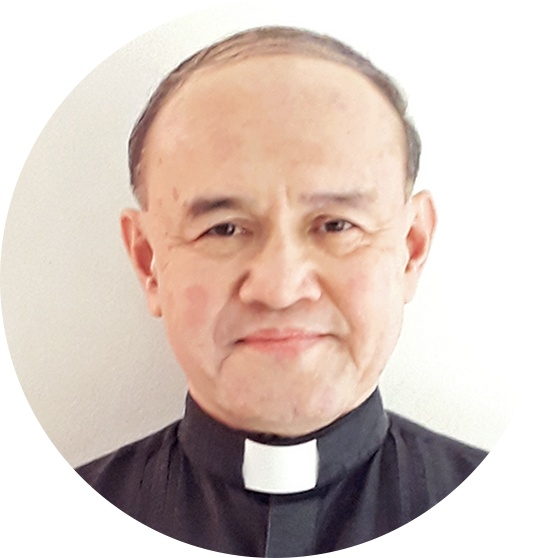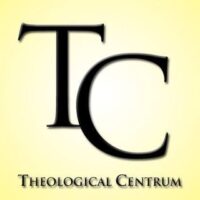 by Fr. Jaime B. Achacoso, J.C.D.
by Fr. Jaime B. Achacoso, J.C.D.
Chronology of the Problem
In March 2019, at the conclusion of the spring plenary session of the German Episcopal Conference in Munich, its President, Card. Reinhard Marx of Munich and Freising, announced that the Catholic Church in Germany was embarking on a “binding synodal process” to tackle what he said were three key issues arising from the clerical abuse crisis: (1) priestly celibacy, (2) the Church’s teaching on sexual morality, and a (3) reduction of clerical power. Marx told reporters then that the bishops had unanimously decided these three topics would be subjected to a process of “synodal progression” that could lead to a binding outcome. As a first step on the proposed synodal path (Synodalerweg), Marx announced that the German bishops had decided to set up three preparatory working groups: (1) a working group on “clerical power” headed by Bishop (Bp.) Karl-Heinz Wiesemann of Speyer, (2) a working group on “sexual morality” headed by Bp. Franz-Josef Bode of Osnabrück, and (3) a working group on “the priest’s way of life,” which was to focus on celibacy, under Bp. Felix Genn of Münster. Interim reports were submitted in early September.
Meanwhile, in June of the same year, Pope Francis issued a Letter to the Catholic Church in Germany, supporting the German hierarchy’s desire for deep reform, but proposing a far deeper agenda, characterized by: (1) priority of evangelization, rather than just an expeditive-bureaucratic approach, which the discussions for the synodal path seemed to suggest; (2) more in line with ecclesial communion, not only from the grassroots up, but more especially from the top down; (3) to steer clear of issues regarding which the Magisterium had already pronounced—e.g., sexual morality, identity of the priest, ordination of women. These papal orientations were adopted in their entirety in a draft plan for an alternative Synodal Assembly proposed jointly to the German Episcopate by Card. Rainer Woelki of Cologne and Bp. Rudolf Voderholzer of Regensburg. Unfortunately, the Woelki-Voderholzer proposal was voted down by the Permanent Council of the German Episcopal Conference. Voting 23-3 (with 3 abstaining), the Council decided to create a Synodal Assembly under the joint leadership of the heads of the German Episcopal Conference and the Central Committee of German Catholics (ZdK).
Finally, in the autumn Plenary Assembly of the German Episcopal Conference of the same year in Fulda, the statutes for the synodal assembly were approved, which expanded the discussion groups to four: (1) Authority and separation of powers in the Church—understood as papal infallibility and, power of jurisdiction (sacra potestas) in the Church; (2) Teaching on “sexual morality”— understood as an adoption of an LGBTQ agenda; (3) Clerical discipline and “the priestly mode of life”—understood as doing away with priestly celibacy; (4) “Women at the service of ecclesiastical offices” in the Church—understood as ordination of women.
In a press conference soon after, the spokesman for the German Episcopal Conference issued a statement which is a masterpiece of double-speak, as subsequent events would amply demonstrate: “The synodal way is a sui generis process, and not a synod or a particular council, and there will be no separate German process, without Rome, on questions touching the universal church. But we hope to offer ideas and contributions to the universal church.” The Corona pandemic notwithstanding, such sui generis process did take place and as feared but expected, its conclusions are taking on a “binding” nature at the margin of and even contrary to Catholic doctrine and papal magisterium on the afore-mentioned four issues—i.e., doing away with priestly celibacy, blessing same-sex unions, limiting papal power and admitting ordination of women.
The Root of the Problem
At the root of the problem is a terminological confusion, which needs a fuller discussion that goes beyond the limits of this article but which we can at least summarize. The first concepts that have to be clarified and distinguished are those of the synod and the plenary council.
The synod of bishops is an institution of the Universal Church, that is occasionally convoked so that representatives of the episcopate can collaborate collegially with the Pope and among themselves to resolve questions (basically pastoral) that affect the Church in the whole world or in some country or continent. This college of the ecclesiastical organization was constituted by Pope Saint Paul VI through the M.P. Apostolica sollicitudo of 15.IX.1965. In that same year, the Decree Christus Dominus underscored the importance of this new institution to represent more stably the episcopate and more effectively manifest the solicitude for the entire Church that forms part of the vocation of every bishop. Four principal characteristics can be underlined as regards the configuration of the synod:
First is its universality. It is an institution that is common to the Latin Catholic Church and to the Oriental Catholic Churches, even if there could be synodal assemblies convoked solely for a specific country, region or continent.
Second is its capacity to express episcopal collegiality. To be sure, the synod is neither a strict nor a solemn expression of the episcopal college since it does not have the capacity to express the gathering of all the bishops with the Roman Pontiff (as happens with the ecumenical council). Nevertheless, the synod has the capacity to represent some members of the episcopate before the Pope, such that it constitutes an apt institution for expressing and reinforcing the bond of communion that unites the bishops among themselves and with the Pope. As John Paul II declared, the synod of bishops is “an expressive and operative way in the pastoral exercise of the sollicitudo omnium ecclesiarum proper of all bishops, and the corresponding affectus collegialis of the bishops among themselves” (Speech[1], 20.XII.1990).
Third is its diversity of forms. The synod of bishops may be celebrated in a variety of forms: (a) A General Assembly deals with matters that directly affect the good of the Universal Church (c.345). In turn it can be ordinary (celebrated every 3-4 years), or extraordinary, convoked to address issues that demand rapid resolution (c.346, §2). (b) A Special Assembly deals with problems that directly concern one or various specific regions (c.345).
Fourth is its consultative nature, which is its most important juridico-canonical characteristic. This is especially manifest in the norms of the Code of Canon Law, which underscore the help and counsel the synod provides the Holy Father, at the same time emphasizing the subordination of the synod to the Roman Pontiff (ref. cc.334, 342, 344). The synod, therefore, can never act contrary or even at the margin of the authority of the Pope; neither can it establish or declare anything at the margin of the sacra potestas of the Vicar of Christ. Above all, with respect to the Supreme Authority, the determinations of the synod always has a consultative, never a deliberative (“binding” as the Germans claim) nature.
On the other hand, particular councils are gatherings of Particular Churches—pertaining to the same episcopal conference or ecclesiastical province—with power of governance, above all legislative, in order to respond to the pastoral needs of the people of God. A plenary council is celebrated when the corresponding episcopal conference finds it useful or even necessary.
Its noteworthy characteristics are: (1) Particular councils always act respecting the universal law of the Church on the one hand, while avoiding unnecessary limitation of the power of the individual bishop over the portion of the people of God assigned to him. (2) Particular councils are an instrument for the exercise of the power of governance, above all legislative, but always with previous authorization by the Holy See. Furthermore, its conclusions cannot be binding until approved by the Holy See.
In both cases—whether synod or particular council—the conclusions or dispositions laid down by the assembly can never be binding on the faithful at the margin of the papal placeat.

Hermeneutics of the German Language: A Tendency to Nominalism
Applying the foregoing principles, it is obvious that the so-called German synodal path was not a synod, since not only was it convoked despite the expressed prohibition of the Holy See, but even violated the consultative character of synods, by purporting to make its results and resolutions binding on the particular Churches in Germany.
Neither was it a plenary council since it did not represent all the particular Churches in Germany. This could have been the only way for it to make its determinations binding, but only if such determinations were backed unanimously by the bishop members of the episcopal conference; otherwise it required the canonizatio by the Holy See, which to date it does not have.
How did the German synodal path lose its way? To my mind, this is yet another manifestation of an intrinsic tendency in the German language, which tends to creep into the thinking of not a few German philosophers, theologians and now canonists of the 20th Century up to the present. For want of a better term, I would call it nominalism.
In effect, the German language is fond of building nouns by juxtaposing other nouns, adjectives and verbs. There is nothing wrong with this procedure for as long as it constitutes an attempt to capture a reality by putting together terms that describe the different aspects of that reality. Thus, the noun Schweinrollbrat, which is a roasted pork roll popular in Bavaria, would best describe the reality by juxtaposing the terms (and notions) of Schwein (pork) + Roll (roll) + bratten (to roast).
The danger is when the juxtaposition of notions/concepts results in a creation of a new concept that does not reflect reality. This is what has happened in the case of the present German conundrum of the Synodalerweg (Synodaler + Weg = synodal path), which marries the concept of the synod—which is canonically defined—with a way of doing things (the synodal path)—which is only now defined by the statutes crafted by the present assembly for its own purpose and which goes beyond the scope of the synod as defined by Canon Law. In other words, the proponents of the Synodalerweg have confused an accident (the conduct or way of carrying out the process) with the substance of a synod, all the time modifying that conduct as tradition and Canon Law has defined it and how that reality had always been understood.
Synodality, Collegiality and Communion: The Key to a Right Understanding
The key towards the resolution of the present conundrum had actually been clearly stated by the International Theological Commission in a document on the theological roots of synodality in the Church—Synodality in the Life and Mission of the Church—published in March 2018. A close reading of that document should clarify the whole issue, and resolve the problem of the German Synodalerweg by unmasking its fatal error. Let us quote some pertinent passages:
Although synodality is not explicitly found as a term or as a concept in the teaching of Vatican II, it is fair to say that synodality is at the heart of the work of renewal the Council was encouraging. The ecclesiology of the People of God stresses the common dignity and mission of all the baptized, in exercising the variety and ordered richness of their charisms, their vocations and their ministries. In this context the concept of communion expresses the profound substance of the mystery and mission of the Church, whose source and summit is the Eucharistic synaxis. This is the res of the Sacramentum Ecclesiae: union with God the Trinity and unity between human persons, made real through the Holy Spirit in Christ Jesus.
In this ecclesiological context, synodality is the specific modus vivendi et operandi of the Church, the People of God, which reveals and gives substance to her being as communion when all her members journey together, gather in assembly and take an active part in her evangelizing mission (n.6).
While the concept of synodality refers to the involvement and participation of the whole People of God in the life and mission of the Church, the concept of collegiality defines the theological significance and the form of (a) the exercise of the ministry of Bishops in the service of the local Church entrusted to the care of each of them, and (b) of the communion between local Churches at the heart of the one universal Church of Christ, brought about by means of the hierarchical communion of the College of Bishops with the Bishop of Rome. Collegiality is thus the specific form in which ecclesial synodality is manifested and made real through the ministry of Bishops on the level of communion of the local Churches in a region, and on the level of communion of all the Churches in the universal Church. An authentic manifestation of synodality naturally entails the exercise of the collegial ministry of the Bishops (n.7).
Where the German synodal path erred was to forget the paramount importance of the mystery of communion in the Church—as the mystical Body of Christ with the Holy Spirit as its animating principle—the practical guarantee of which is the exercise of collegiality among the bishops in union with the Pope.
[1] Addressed to the Cardinals, the Curia and the Roman Prelatures, as Christmas was approaching. The translation is ours.
